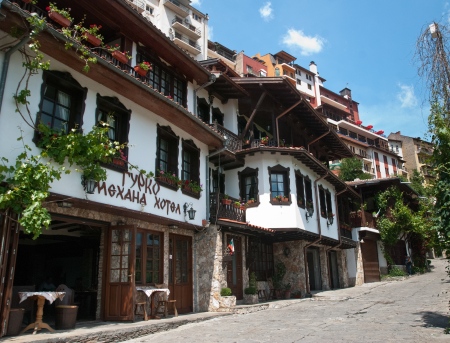Veliko Turnovo
Veliko Tarnovo, or as the locals call it, "Tsarevgrad" (the city of the Tsars) was the medieval capital of Bulgaria in the period between 1185 and 1396. During the Middle Ages it was the most important political, economic, cultural and religious center of the Bulgarian empire. During the Ottoman invasion, the town was besieged for 3 months and the fortress was defended by the Patriarch himself. The city was razed to the ground. The Patriarchal Cathedral was totally destroyed along with a major part of the royal edifices. Tarnovo did not gain back its importance until the 19th c. when it was liberated from the Ottomans along with other parts of Bulgaria. In 1879 the first National Assembly convened in Veliko Tarnovo and ratified the first state's constitution which is the main low of Bulgaria up to nowadays.
The old city is situated on three hills - Tsarevets, Trapezitsa and Sveta Gora in the foot of which curve the scenic meanders of the Yantra river. A must see in each visit to the town is Tsarevets hill where are the remains of the former Royal Palace, the restored Patriarchal Cathedral as well as the ruins of many residential and administrative buildings. Baldwin's tower is part of the fortification of the hill. The tower gained its name after the Latin Emperor Baldwin I being captured prisoner by the Bulgarian King Kaloyan and after he found his death here.
Other sites of interest are the historic hill of Trapezitsa, which hosted many beautiful buildings and churches; the Samovodska charshiya, which in the past was the main commercial street. Today visitors may watch artisans practicing their crafts according to old traditions and using original tools.
An attractive visit point in the vicinity of Veliko Turnovo is the village of Arbanassi with its fortress-like houses and beautifully painted churches, The Transfiguration monastery as well as the ruins of the Roman town Nikopolis ad Istrum.





